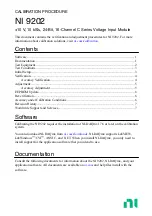
Service and Maintenance
37
Cat. No. 01022940
4. Allow the unit to run for at least 30 minutes. Check the product water until the pH for the concentrate and prod-
uct remains stable for five (5) minutes and the TDS is greater than 95 percent rejection.
5. Turn the unit power off.
6. Connect the concentrate tubing from the membrane to the motor panel.
7. Reconnect the product tubing to the service line. Install the new sediment filter.
8. Remove the jumper on the pressure switch and then reinstall the pressure switch cable.
The system is now ready for use.
Testing
If the product flow calculations show a loss of flow, or the product quality has become poor, one or more elements will
require cleaning or replacement. Because poor performance might be due to only one element, test the product flow and
quality from individual housings.
To test each element:
1. Disconnect the product tubing from the housing to be tested.
2. Apply power to the unit, and then press the RUN NOW button. Measure the product flow and TDS from the test
element.
3. Disconnect power to the unit and reinstall the tubing.
4. Continue testing the elements as needed to determine which should be cleaned or replaced.
Cleaning
During the operation of any reverse osmosis system, dissolved solids and particulate matter are concentrated inside the
module element. If these contaminants are present in relatively low concentrations, the concentrate flow from the system
flushes them to drain. In most cases, water pretreatment such as filters and softeners will prevent the deposit of these
contaminants.
When these deposits occur, there will be a decrease in the product water flow and quality. When these symptoms be-
come excessive, the modules must be cleaned before they are permanently damaged.
To determine when cleaning is needed, compare the current system performance to the performance of the system when
the reverse osmosis elements were new. Use Table 4 to obtain data and compare the performance of the system, “new”
and “now” (record the data in pencil).
Test Data
Feed
Product
Concentrate
New
Now
New
Now
New
Now
Flow (gpm)
TDS (ppm)
Pressure (psi)
Temp. (°F)
Table 4. System performance—new vs. present.
NOTICE
If new data is not available, use the specifications listed earlier in these instructions. However,
keep in mind that the new elements may have exceeded these specifications, so performance may
have decreased even if the unit still exceeds specifications.
In addition to differences in product flow and quality (TDS), determine whether there were any changes in concentrate wa-
ter flow, feed water TDS, feed water temperature and feed or product pressures. Changes in these values provide clues
to indicate the cause of any problems with the product water.
If there were changes in feed water temperature or pressure, the product water flow rates will have to be converted to flow
rates under standard conditions (77° F and 100 psig) in order for any comparison to be valid. Refer to the Product Flow
Calculation section to calculate flow rates under standard conditions, then compare the converted values. A decrease in
Содержание M1 Series
Страница 83: ...Notes 79 Cat No 01022940 Notes ...
Страница 84: ......
















































